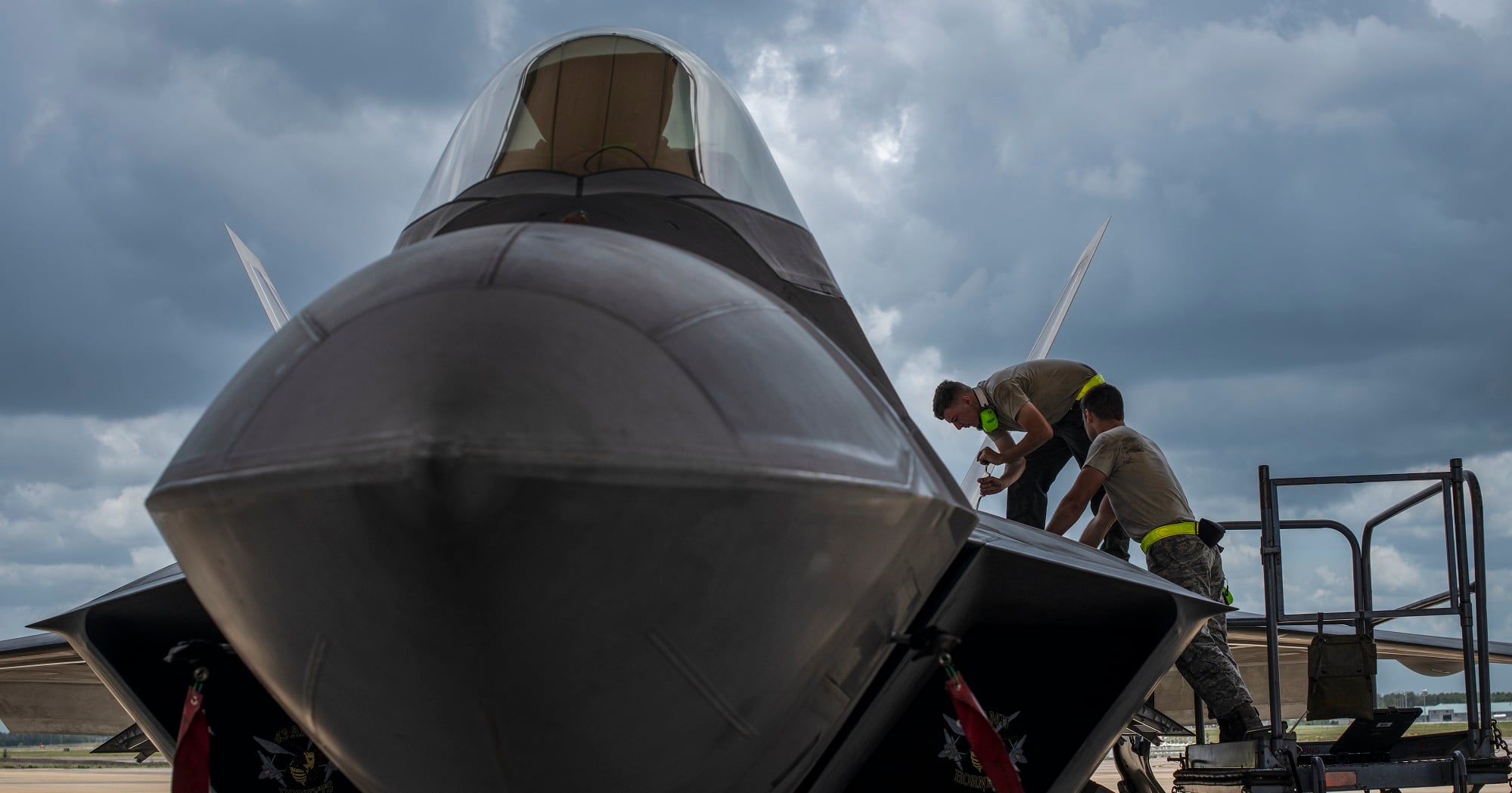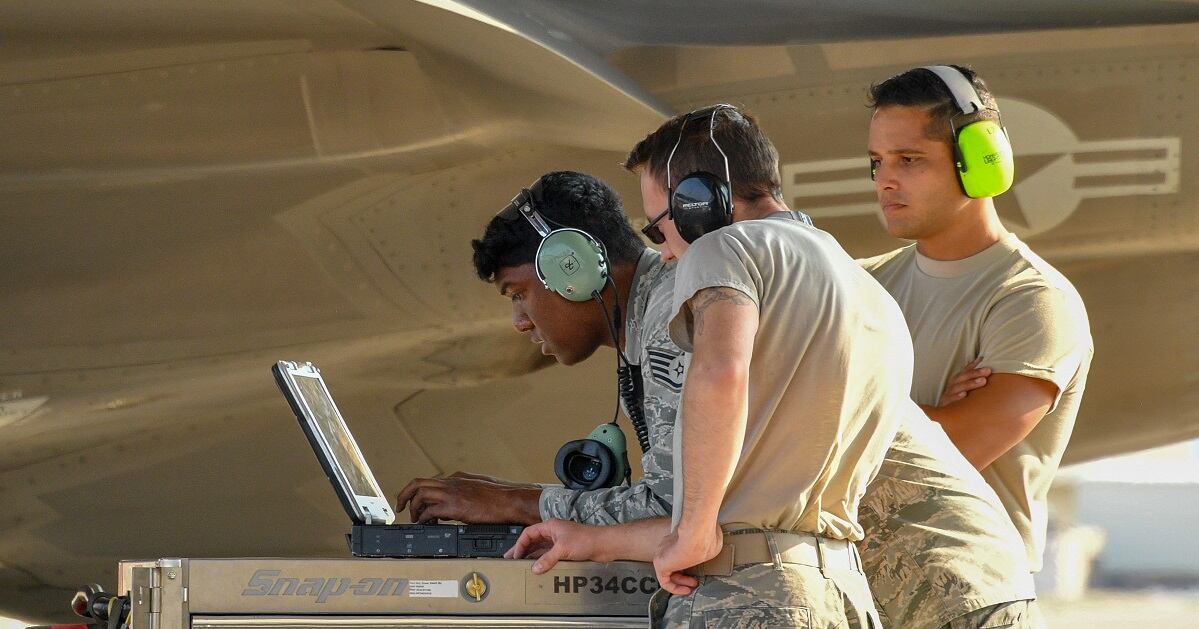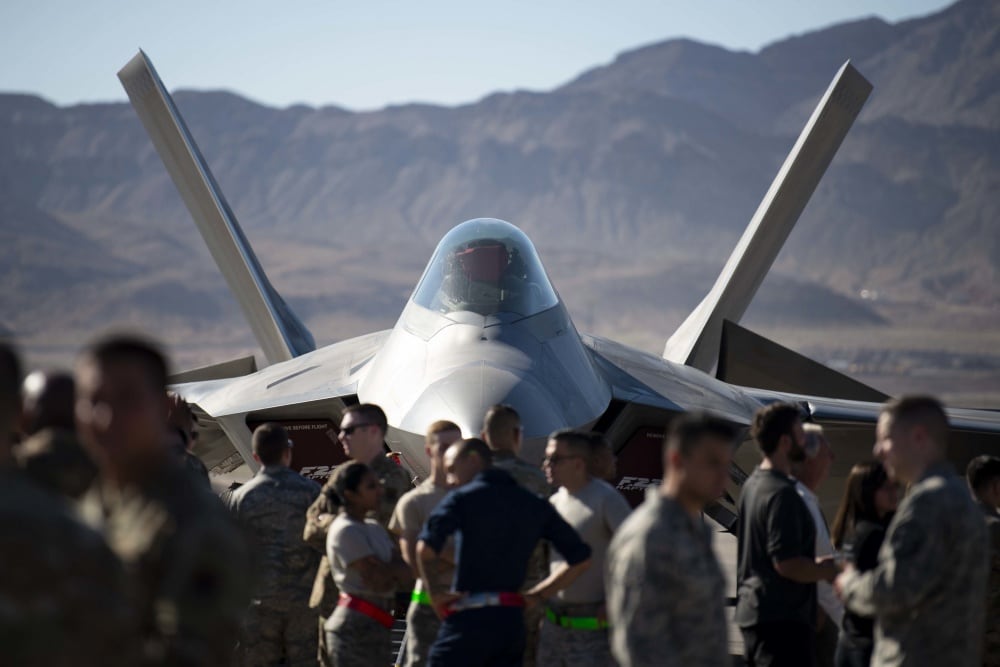Multiple maintenance errors, unsafe unit culture and leadership failure caused an F-22 Raptor to overheat while it was in the shop at Nellis Air Force Base, Nevada, last fall, costing $2.7 million to repair, according to an investigation report released Friday.
The advanced fighter jet, assigned to the 422nd Test and Evaluation Squadron at Nellis and maintained by the 757th Aircraft Maintenance Squadron, suffered a series of oversights and incorrect procedures while airmen overhauled the airframe to prepare it for new operational test missions.
Part of the jet’s auxiliary power unit was removed two days before the Oct. 30, 2020, accident so airmen could troubleshoot one of the modifications, the Air Force said. That auxiliary unit is an engine that provides electrical and hydraulic power to a plane for ground operations.
RELATED

But maintainers did not correctly label the relevant circuit breakers with a “REMOVE BEFORE FLIGHT” tag or add the right warnings to the aircraft or its digital paperwork as called for by the repair manual.
When the mishap occurred, the auxiliary power unit’s emergency off switch was incorrectly set to ‘normal,’ the service said in a news release Friday. One maintainer turned on the power while defueling the aircraft, without realizing an exhaust duct still needed to be installed to let out excess hot air.
“Once the [power unit] was started, hot exhaust gas flowed directly into the exhaust bay rather than being diverted out of the aircraft,” the Air Force said. “With smoke emanating from the exhaust bay, the maintenance member selected the wrong course of action by making an improper attempt to run diagnostics and review fault-reporting codes.”
That allowed the Raptor to overheat longer, until another maintainer manually shut down the power source.
“The [F-22] sustained damages to airframe, systems, wiring, hydraulics and surrounding structure and components of the … exhaust bay from an overheat event,” the report found. “Temperatures within the exhaust bay reached 600-700 degrees Fahrenheit for less than 10 minutes.”
Several maintainers failed to prevent the incident, the report said, including a supervisor who was onsite to check the work of another airman but did not correct their mistakes. Investigators also noted the Nellis airmen were distracted by a morale-booster day with a VIP visit and a flight demonstration, leading them to overlook certain steps.
RELATED

Leading up to the accident, various airmen performed inspections they were not qualified to do, did not realize the exhaust duct needed to be installed, failed to properly fill out the maintenance paperwork and put visual reminders of remaining work on the airplane, and disagreed on the right way to take fuel out of the jet.
All but one of the unit’s maintainers who serviced or inspected the aircraft were fully trained and qualified, the report said.
“At the time of the mishap, there was no one formally assigned to provide oversight of the [F-22] and its forms beyond standard production personnel,” the report added.
The F-22 had 51 “red X” events in its records, indicating the “most serious possible condition: that the aerospace vehicle is unsafe, unserviceable or non-airworthy,” the report said. Yet the jet was towed between hangars and powered up against service guidelines.
Maintainers correctly noted installation warnings for F-22 exhaust ducts in only about one-third of the times when they were removed in the year leading up to the incident, investigators found.
“If maintenance crews correctly executed proper maintenance procedures in accordance with [technical order] guidance, this mishap would not have occurred,” the report said.
Rachel Cohen is the editor of Air Force Times. She joined the publication as its senior reporter in March 2021. Her work has appeared in the Washington Post, the Frederick News-Post (Md.), Air and Space Forces Magazine, Inside Defense, Inside Health Policy and elsewhere.





